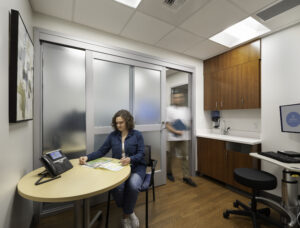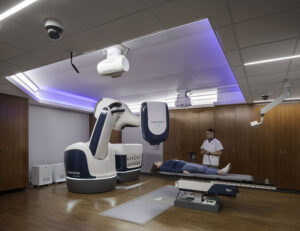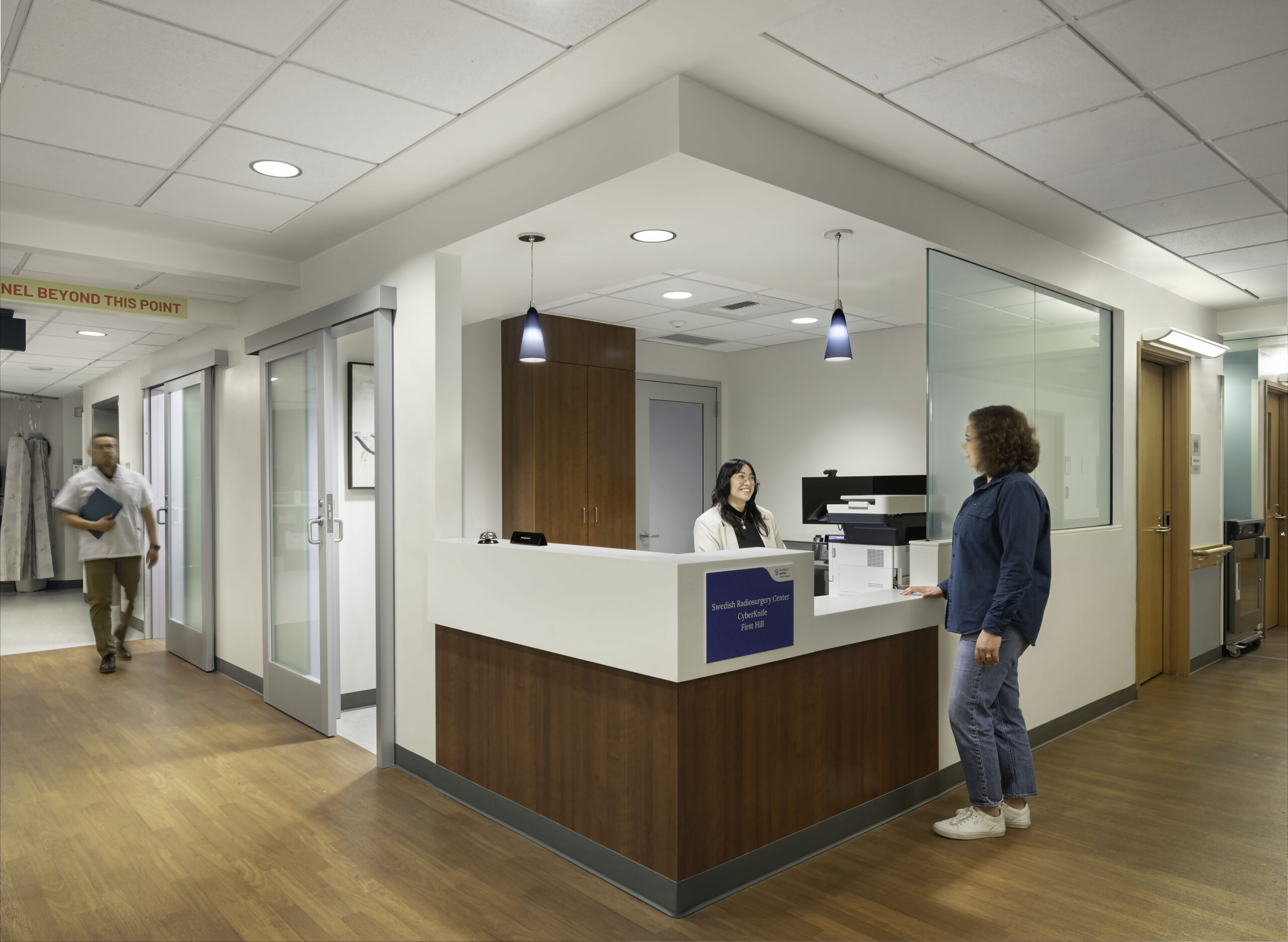Photo: Patients shouldn’t have to think about how to find their way, whether the air is circulating properly, or where shielding and equipment access points are located — they need to focus on healing.
By Mariah Kiersey
As cancer treatments grow more precise and technology-driven, the spaces that support them must evolve just as intelligently. Much of this evolution happens behind the scenes through what might be called the “quiet architecture” of cancer care facilities. These are the invisible design decisions that shape how patients experience care and how providers deliver it every day.
Quiet Architecture and Patient Experience
From a patient’s perspective, much of this “quiet architecture” goes unnoticed, so why is it important that these invisible layers of design are done right? In healthcare, there are times when design should intentionally fade into the background; if it feels “quiet,” it’s doing its job. Patients shouldn’t have to think about how to find their way, whether the air is circulating properly, or where shielding and equipment access points are located — they need to focus on healing. When these invisible systems aren’t designed well, they can cause stress, confusion, or even safety risks. Getting these layers right ensures the environment feels safe, seamless, and supportive, even if patients never consciously notice them.
Thoughtful design ultimately impacts not just the patient experience, but also the work of doctors, nurses, and technicians who deliver care every day. Design is as much about supporting caregivers as it is about supporting patients. Thoughtful layouts reduce steps and streamline workflow, giving providers more time with patients. Clear sightlines improve safety. Intuitive placement of equipment reduces fatigue. When staff feel that their environment is working with them rather than against them, they can focus their energy on delivering the highest quality of care, which directly improves the patient experience.
Design Solutions

The Providence Swedish Cancer Institute project sits at the intersection of design and oncology. There, the design challenge was twofold: integrating extremely technical, highly regulated equipment like the CyberKnife while also creating a welcoming, human-centered environment. Cancer care is deeply emotional, and we wanted patients to feel a sense of calm and dignity from the moment they entered the space. Balancing those two demands, precision and humanity, was the heart of the design challenge.
The CyberKnife vault is an incredible piece of technology. Designing for CyberKnife requires millimeter precision: shielding thicknesses, ceiling heights, and tolerances for vibration. But beyond those technical requirements, we also thought carefully about how patients would feel in the space. We used soothing finishes, warm lighting, and simple, uncluttered design gestures to soften what could otherwise feel overwhelming. The vault is both a technical room and a healing space, so it needed to deliver safety and accuracy while also offering comfort through color and light.
Additionally, as cancer treatment is often an emotionally and physically taxing process, we looked at every patient touchpoint from the waiting area to the treatment chair. Natural light, calming colors, and biophilic elements helped reduce stress, while privacy was prioritized to help patients feel secure. Even small details, like where a handheld controller is stored or how a room accommodates a family member, contribute to a sense of care. The goal was to create a setting that restores dignity and control during a time when so much feels beyond a patient’s control.
Planning Ahead
Renovations in a hospital setting can be highly disruptive to ongoing care, meaning phasing and logistics were critical. We coordinated closely with the hospital to sequence construction in ways that minimized noise, dust, and downtime for active clinical areas. Temporary partitions, clear signage, and after-hours work helped maintain safety and continuity of care. Behind the scenes, we designed with flexibility so that equipment and staff could shift without interrupting patient treatment schedules.
Technology in cancer care also evolves at a rapid pace. So, we design with adaptability in mind; extra conduit runs, modular casework, flexible room sizes, and structural allowances for future equipment. By building in capacity for unknowns, we help facilities adapt to new technology with minimal disruption. The CyberKnife vault, for example, was designed with infrastructure that could accommodate upgrades in radiation delivery systems down the line.
Project Takeaways

Photo Credit (all): Cleary O’Farrell
One lesson learned from the Providence Swedish Cancer Institute project is that healthcare spaces need to serve both sides equally, the technical precision of equipment and the human needs of patients and caregivers. Another is that early and ongoing collaboration with clinicians, engineers, and vendors is essential. Go through every option that the vendor can offer and how those accessories are stored or charged. An outlet may need to go into a side storage piece and may need to be shielded. These projects succeed when every voice, design, construction and care delivery is heard from the start.
Design will remain essential in bridging technology and humanity. As treatments advance, the environments that support them must evolve, not only technically but also emotionally. Our role as architects is to bring all the right voices to the table, ensuring that details are captured and that the experts, who often shift as technology evolves, are fully engaged in each project. Thoughtful design will continue to shape spaces that give patients strength, restore dignity, and empower caregivers to do their best work. Ultimately, it’s about creating environments where healing feels possible, even in the most challenging moments.
Mariah Kiersey is the Healthcare Studio Leader and a Senior Principal at Ankrom Moisan.


